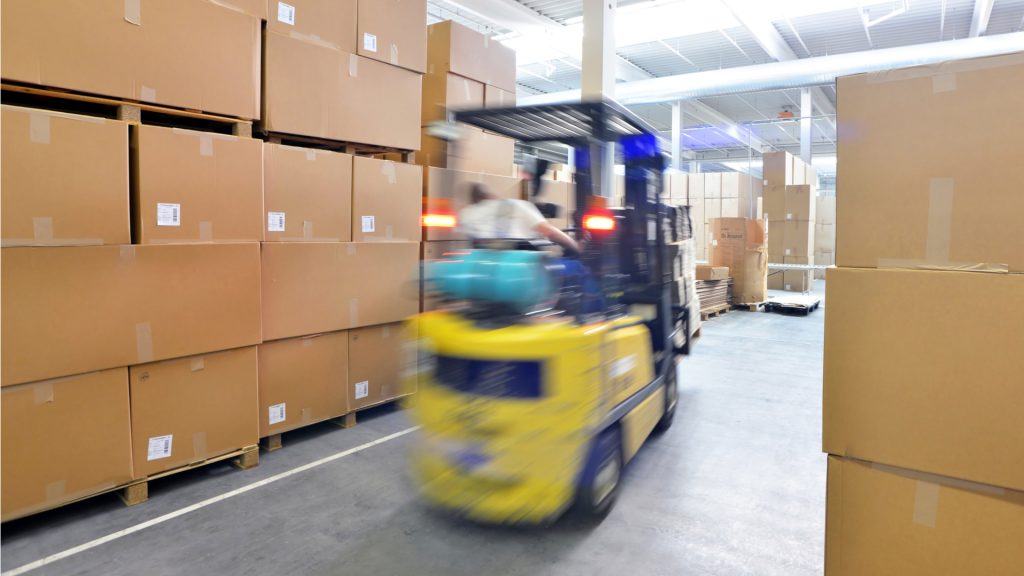Modern forklifts can have their origins traced back to the mid-nineteenth century through the early 20th century, when they were nothing more than counterweight and pulley systems.
In 1917, the Clark Company created a truck called the Tructractor to move materials around their factory. When visitors saw the convenience offered by the invention, they placed orders for Tructractor for their businesses too. Clark Companys tactic was shortly followed by Yale & Towne, a renowned forklift company today (now known as Yale Materials Handling Corporation), who introduced the first electric truck with forks that could lift loads off the groundit is regarded essentially as the first forklift, as conferred by the Material Handling Equipment Distributors Association (MHEDA) Journal.
In a report by Research Markets, titled Global Markets for Forklift Trucks, the market for forklifts around the world is expected to increase from $41.9bn in 2016 to $56.3bn in 2021, at a compound annual growth rate (CAGR) of 6.1% for 2016-2021.
Key driving factors identified in the global forklift truck market include expansion of warehouse space globally, growing e-commerce business across the globe, strong demand for forklift truck replacement in developed markets, and bulk investments in purchase of low-cost forklift trucks in emerging markets.
Within the GCC, the combined logistics market for materials handling equipment, is estimated to be worth around $47bn, with Saudi Arabia accounting for around $19bn, or a 43% share.

Varun Viswanath, assistant sales manager for storage & material handling solutions at GENAVCO, comments: The forklift market segment has actually grown in 2017 as compared to 2016. Key driving factors identified in the UAE forklift truck market include expansion of warehouse space by 3PLs, FMCG, and retail companies, and of course, growing e-commerce business. GENAVCO offers forklift trucks by a range of companies, including Crown, Flexi, Stow, and JLG.
While worker safety has always been a primary topic of discussion with forklifts, another vital factor to be considered is environmental most importantly the amount of emissions that forklifts release. Development of electric forklifts is the main way that manufacturers have found they can lower emissions levels. However, there is still a setback with electric forklifts they are not as powerful as their diesel or gas-powered counterparts. However, alternate forms of energy are gradually coming into play.
Viswanath adds: The market is seeing the development of semi-automated and automated material handling equipment (MHE); in addition, lithium powered machines are more readily available and, given the right applications, we will see increased sales of this power source in the market place.

In early 2017, Amazon announced that it was replacing its forklifts batteries in 11 warehouses with hydrogen fuel cells. A Reuters news report read that the e-retail giant had acquired the right to buy up to 23% of hydrogen fuel cell maker Plug Power. Plug Power went on to say that Amazon was going to spend $70mn this year on making the switch to hydrogen powerbut the end result would enable Amazons forklifts to work round the clock, without the need to recharge. Operators will simply have to refill them with hydrogen fuel when they run out. Amazon was soon followed by Wal-Mart, and currently the entire fleet of material handling equipment at the new Wal-Mart Perishable Distribution Centre (PDC) in Balzac Alberta is powered by hydrogen fuel cells.

Toyota Motor Corp., the worlds largest forklift maker, is developing hydrogen-powered models and began using prototypes at one of its plants in Japan this year. Hyster-Yale Materials Handling, another large forklift maker, bought Nuvera Fuel Cells in 2014 and has begun incorporating the technology into its products. Hyster is also looking into bio fuels and CNG options to power forklifts.
Nuvera CEO Jon Taylor comments: Lead-acid batteries have inefficiencies. Fuel cells solve most of those shortfalls. Nuvera produces PowerEdge, a drop-in hydrogen fuel cell system designed to replace the battery in an electric forklift, and PowerTap, an on-site hydrogen fuel generation and distribution system.
Other fuel-cell companies, including Ballard Power Systems and Hydrogenics Corp. are pushing beyond forklifts, using hydrogen to power buses, delivery trucks, and drone aircraft. In each of those markets, the vehicles return to a central depot for refuelling, eliminating the need for a sprawling network of hydrogen stations.

However, hydrogen fuel is still taking its time to be mass-accepted. Plug Power, founded in 1997, spent years trying to tap into the commercial market before Amazon and Wal-Mart came knocking at their door. While hydrogen fuel doesnt emit anything harmful, manufacturers still have to use a lot of energy and produce greenhouse gases in the process. Plus, switching to hydrogen is no simple solution since the fuel must either be delivered or produced on-site. However, as more companies prioritise green supply chain management, materials handling operations not only face challenges to reduce total cost of operations and increase efficiency, but to minimise environmental impact. Fuel cell-powered lift trucks offer a realistic, long-term solution that addresses all of these challenges.
Fuel cell technology explained:
A fuel cell is a device that generates electricity by a chemical reaction. Every fuel cell has two electrodes called, respectively, the anode and cathode. Converting hydrogen gas into electricity produces only water and heat as a by-product, meaning fuel cell cars or forklifts dont create tailpipe pollution when theyre driven. Producing the hydrogen itself can lead to pollution, including greenhouse gas emissions, but even when the fuel comes from one of the dirtiest sources of hydrogen natural gas todays early fuel cell cars and trucks can cut emissions by over 30% when compared with their gasoline-powered counterparts.




